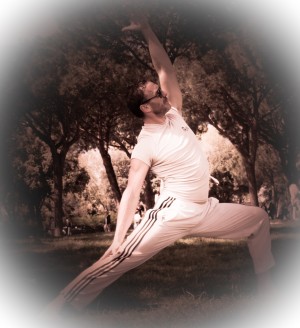Breath is our life force, the way in which we channel vitality and sustain our basic
functions. Our physical bodies depend on breath, as each breath brings new oxygen
and prana into the body and is the catalyst for starting the metabolic processes that
transform nutrients into energy.
At the same time, breathing out eliminates carbon dioxides and other waste creating that perfect balance
that we see everywhere in the Universe where one thing cannot exist without its opposite
with the breath being no exception.
In Yogic terms, breathing is the bridge that connects our physical body to the mind
creating that special bond where one affects the other. We have all experienced at
times the need to deepen our breathing in order to release tension both in our body
and mind.
We have all had times when we have felt tightness in our body after an
unpleasant thought and have noticed a shortness of breath. This prolonged awareness
is at the core of yoga and separates this discipline from other forms of exercise where
breathing is merely a consequence of a physical activity whereas in yoga it is used
consciously and comes before anything else. It is in fact the source itself that
generates any movement culminating in what is called vinyasa (a Sanskrit word often
associated with dynamic forms of yoga): the sacred moment in which movement and
breath merge together.
Working with the breath can ease a practitioner into any asana (position) and although
breathing is an involuntary act where we cannot control whether or not we do it , we
can still control HOW we do it. Modern medicine is proving what yogis have long
known: that breath is intimately tied to blood pressure, heart rate, biorhythms,
emotional state, stress levels and mood. And that all of that can be controlled by the
quality and the depth of our breath through different methods and exercises which
are at the base of Pranayama, the art of breath control.
Taking the time to actively improve and upgrade the quality of breath can immediately
enhance the health and well-being of each living cell in the human body creating a
tool that is always available. We can transform the experience we have with ourselves
simply implementing a different approach to “common breathing”.
For instance, engaging in a nasal breathing is a valid technique not only to take in
more purified air but also and more importantly, to stimulate specific receptors located
in the nose. These are connected through the spinal cord to the “vagus nerve” in the
brain, the one responsible of activating the parasympathetic elements of the nervous
system in charge of soft responses that decrease stress chemicals to calm and relax
the body.
Additionally, we can learn ( or re-learn) to utilize more the lower portion of the chest
with a greater involvement of the abdominal muscles and diaphragm, the primary but
often neglected respiratory muscle, made of a sheet of internal skeletal tissue that
extends across the bottom of the rib cage and separates the thoracic cavity (heart,
lungs and ribs) from the abdominal one.
This procedure is followed in order to relieve stress from other secondary respiratory
muscles (like the ones around the neck/shoulder area which are usually burdened with
resultant discomfort ) and initiate a set of fundamental processes such as massaging
some organs (lungs), improving functions (digestion, heart rate with less overload )
and increasing oxygenation with more toxins being disposed of.
Conversely, the more shallow the breath (from the top of the chest/bottom of the
throat up) the more the sympathetic branch of the nervous system is engaged thus
activating our “fight or flight response” and increasing the chemical release of stress
hormones, adrenaline and lactic acid in our bloodstreams. Unfortunately, the latter is
how usually people tend to breathe most of the times, no wonder why we nowadays
have societies with individuals overly stressed and with a tendency to violence.
For many breathing is just a way to keep alive, for the expert Yogis is instead a
lifestyle choice. According to a Yogic legend, each of us is born with a specific
number of breaths per life time and the deeper and longer one is able to breathe, the
longer life span one can aspire to attain whereas short and nervous breathing would
only wear out the reserve quicker. Legends aside, living wisely is not just a matter of
quantity.
The self-conscious yogi is more interested in quality of life and in being able
to stay centered despite whatever chaos in the outside( and inside) world.
Performing any breathing exercise and improving skills during the yoga practice will
undoubtedly transform the practitioner even off the mat when a simple routine will
become a new attitude for every day’s life.





